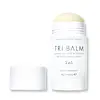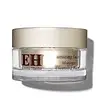What's inside
What's inside
 Key Ingredients
Key Ingredients

 Benefits
Benefits

 Concerns
Concerns

 Ingredients Side-by-side
Ingredients Side-by-side

Oryza Sativa Bran Oil
EmollientRibes Nigrum
EmollientCucurbita Pepo
Skin ConditioningSodium Hyaluronate
HumectantCitrus Nobilis Peel Oil
MaskingHelianthus Annuus Seed Oil
EmollientCetearyl Alcohol
EmollientPrunus Amygdalus Dulcis Oil
Skin ConditioningCaprylic/Capric Triglyceride
MaskingPEG-6 Caprylic/Capric Glycerides
EmulsifyingAcetylated Glyceryl Stearate/Palmitate
Skin ConditioningSorbitan Stearate
EmulsifyingTriticum Vulgare Germ Oil
EmollientEuphorbia Cerifera Cera
AstringentStearic Acid
CleansingPEG-60 Almond Glycerides
EmulsifyingSilica
AbrasiveRose Flower Oil
MaskingCopernicia Cerifera Cera
EmollientMyrica Cerifera Fruit Wax
EmollientTocopherol
AntioxidantLimonene
PerfumingBrassica Napus Seed Oil
EmollientCamelina Sativa Seed Oil
Skin ConditioningCrambe Abyssinica Seed Oil
Skin ConditioningCitronellol
PerfumingBorago Officinalis Seed Oil
EmollientGeraniol
PerfumingLinalool
PerfumingLeuconostoc/Radish Root Ferment Filtrate
AntimicrobialDaucus Carota Sativa Callus Lysate
AntioxidantOryza Sativa Bran Oil, Ribes Nigrum, Cucurbita Pepo, Sodium Hyaluronate, Citrus Nobilis Peel Oil, Helianthus Annuus Seed Oil, Cetearyl Alcohol, Prunus Amygdalus Dulcis Oil, Caprylic/Capric Triglyceride, PEG-6 Caprylic/Capric Glycerides, Acetylated Glyceryl Stearate/Palmitate, Sorbitan Stearate, Triticum Vulgare Germ Oil, Euphorbia Cerifera Cera, Stearic Acid, PEG-60 Almond Glycerides, Silica, Rose Flower Oil, Copernicia Cerifera Cera, Myrica Cerifera Fruit Wax, Tocopherol, Limonene, Brassica Napus Seed Oil, Camelina Sativa Seed Oil, Crambe Abyssinica Seed Oil, Citronellol, Borago Officinalis Seed Oil, Geraniol, Linalool, Leuconostoc/Radish Root Ferment Filtrate, Daucus Carota Sativa Callus Lysate
Vitis Vinifera Seed Oil
EmollientPrunus Amygdalus Dulcis Oil
Skin ConditioningCaprylic/Capric Triglyceride
MaskingCetearyl Alcohol
EmollientPEG-8 Beeswax
EmulsifyingPEG-6 Caprylic/Capric Glycerides
EmulsifyingPEG-60 Almond Glycerides
EmulsifyingSorbitan Stearate
EmulsifyingPalmitic/Stearic Triglyceride
Limonene
PerfumingCitrus Aurantium Dulcis Peel Oil
MaskingSilica
AbrasiveGlycerin
HumectantPhenoxyethanol
PreservativeBenzyl Alcohol
PerfumingCitrus Aurantium Bergamia Fruit Oil
MaskingCitrus Aurantium Amara Flower Oil
MaskingCitrus Nobilis Peel Oil
MaskingJuniperus Virginiana Oil
MaskingWater
Skin ConditioningLecithin
EmollientLinalool
PerfumingButylene Glycol
HumectantOctyldodecyl PCA
EmollientMenthyl PCA
HumectantTocopherol
AntioxidantAscorbyl Palmitate
AntioxidantCrithmum Maritimum Extract
Skin ConditioningHelianthus Annuus Seed Oil
EmollientMoringa Oleifera Seed Extract
Skin ConditioningJasminum Officinale Flower Oil
PerfumingRosa Damascena Flower Oil
MaskingDisodium Phosphate
BufferingCitronellol
PerfumingCitric Acid
BufferingGeraniol
PerfumingCitral
PerfumingVitis Vinifera Seed Oil, Prunus Amygdalus Dulcis Oil, Caprylic/Capric Triglyceride, Cetearyl Alcohol, PEG-8 Beeswax, PEG-6 Caprylic/Capric Glycerides, PEG-60 Almond Glycerides, Sorbitan Stearate, Palmitic/Stearic Triglyceride, Limonene, Citrus Aurantium Dulcis Peel Oil, Silica, Glycerin, Phenoxyethanol, Benzyl Alcohol, Citrus Aurantium Bergamia Fruit Oil, Citrus Aurantium Amara Flower Oil, Citrus Nobilis Peel Oil, Juniperus Virginiana Oil, Water, Lecithin, Linalool, Butylene Glycol, Octyldodecyl PCA, Menthyl PCA, Tocopherol, Ascorbyl Palmitate, Crithmum Maritimum Extract, Helianthus Annuus Seed Oil, Moringa Oleifera Seed Extract, Jasminum Officinale Flower Oil, Rosa Damascena Flower Oil, Disodium Phosphate, Citronellol, Citric Acid, Geraniol, Citral
 Reviews
Reviews

Ingredients Explained
These ingredients are found in both products.
Ingredients higher up in an ingredient list are typically present in a larger amount.
This ingredient is an emollient, solvent, and texture enhancer. It is considered a skin-softener by helping the skin prevent moisture loss.
It helps thicken a product's formula and makes it easier to spread by dissolving clumping compounds.
Caprylic Triglyceride is made by combining glycerin with coconut oil, forming a clear liquid.
While there is an assumption Caprylic Triglyceride can clog pores due to it being derived from coconut oil, there is no research supporting this.
Learn more about Caprylic/Capric TriglycerideCetearyl alcohol is a mixture of two fatty alcohols: cetyl alcohol and stearyl alcohol. It is mainly used as an emulsifier. Emulsifiers help prevent the separation of oils and products. Due to its composition, it can also be used to thicken a product or help create foam.
Cetearyl alcohol is an emollient. Emollients help soothe and hydrate the skin by trapping moisture.
Studies show Cetearyl alcohol is non-toxic and non-irritating. The FDA allows products labeled "alcohol-free" to have fatty alcohols.
This ingredient is usually derived from plant oils such as palm, vegetable, or coconut oils. There is debate on whether this ingredient will cause acne.
Due to the fatty acid base, this ingredient may not be Malassezia folliculitis safe.
Learn more about Cetearyl AlcoholCitronellol is used to add fragrance/parfum to a product. It is often derived from plants such as roses. In fact, it can be found in many essential oils including geranium, lavender, neroli, and more. The scent of Citronellol is often described as "fresh, grassy, and citrus-like".
Since the Citronellol molecule is already unstable, Citronellol becomes irritating on the skin when exposed to air.
Citronellol is a modified terpene. Terpenes are unsaturated hydrocarbons found in plants. They make up the primary part of essential oils.
Citronellol is not able to be absorbed into deeper layers of the skin. It has low permeability,
Citronellol is also a natural insect repellent.
Learn more about CitronellolCitrus Nobilis Peel Oil is an oil.
Geraniol is used to add fragrance/parfum to a product. It is the main component of citronellol. It is a monoterpenoid and an alcohol.
Monoterpenes are naturally found in many parts of different plants.
Geraniol can be found in many essential oils including Rose Oil and Citronella Oil. The scent of Geraniol is often described as "rose-like". Many foods also contain Geraniol for fruit flavoring.
Geraniol can irritate the skin when exposed to air. However, irritation depends on the ability of geraniol to penetrate into the skin. In general, geraniol is not able to penetrate skin easily.
Geraniol is colorless and has low water-solubility. However, it is soluble in common organic solvents.
Like citronellol, it is a natural insect repellent.
2,6-Octadien-1-ol, 3,7-dimethyl-, (2E)-
Learn more about GeraniolHelianthus Annuus Seed Oil is the oil derived from the seeds of a Sunflower. Sunflower seed oil is non-fragrant. It is an emollient, meaning it helps to soften the skin.
Sunflower seed oil contains many fatty acids. The fatty acids found in sunflower seeds include (from highest amount to least): linoleic acid, myristic acid, palmitic acid, stearic acid, arachidic acid, oleic acid, and linolenic acid.
These fatty acids help the skin create ceramides. Ceramides play a role in repairing the skin barrier.
Helianthus Annuus Seed Oil helps moisturize the skin. This in turn helps the skin look more rejuvenated and smoother.
Sunflowers are rich in vitamin E.
Historians believe Indigenous cultures of North America domesticated sunflowers before corn. Thus they relied on sunflower oil for a variety of uses. One such use is moisturizing skin and hair.
Sunflower seed oil may not be fungal acne safe. We recommend speaking with a professional if you have any concerns.
Learn more about Helianthus Annuus Seed OilLimonene is a fragrance that adds scent and taste to a formulation.
It's found in the peel oil of citrus fruits and other plants such as lavender and eucalyptus. The scent of limonene is generally described as "sweet citrus".
Limonene acts as an antioxidant, meaning it helps neutralize free radicals.
When exposed to air, oxidized limonene may sensitize the skin. Because of this, limonene is often avoided by people with sensitive skin.
The term 'fragrance' is not regulated in many countries. In many cases, it is up to the brand to define this term. For instance, many brands choose to label themselves as "fragrance-free" because they are not using synthetic fragrances. However, their products may still contain ingredients such as essential oils that are considered a fragrance.
Learn more about LimoneneLinalool is a fragrance and helps add scent to products. It's derived from common plants such as cinnamon, mint, citrus, and lavender.
Like Limonene, this ingredient oxidizes when exposed to air. Oxidized linalool can cause allergies and skin sensitivity.
This ingredient has a scent that is floral, spicy tropical, and citrus-like.
Learn more about LinaloolThis ingredient is derived from caprylic and capric acids. It is an emulsifier with emollient properties.
According to the manufacturer, it is hydrophilic and soluble in aqueous solutions (water). They also state this ingredient is stable in a medium pH range (~5 - 8).
As an emulsifier, it helps make oils and oil-soluble ingredients more soluble in water.
Learn more about PEG-6 Caprylic/Capric GlyceridesThis ingredient is derived from almond oil. It is an emulsifier with emollient properties.
Emulsifiers help prevent ingredients from separating. The fatty acid content of this ingredient gives it emollient properties. Emollients hydrate the skin by preventing water from evaporating.
Due to the fatty acid content, this ingredient may not be Malassezia folliculitis safe.
The 60 stands for 60 moles of ethylene oxide.
Learn more about PEG-60 Almond GlyceridesPrunus Amygdalus Dulcis Oil comes from the sweet almond, a tree native to Iran. This oil has no fragrance and is non-volatile.
Almonds contain healthy fats, vitamins, and minerals. It is a rich source of Vitamin E, a great antioxidant and skin conditioning ingredient. Sweet almond oil contains fatty acids such as linolenic acid and triglycerides.
The content of sweet almond oil makes it a great emollient; it can help soften and hydrate your skin. Emollients create a barrier over your skin to trap moisture in. Sweet almond oil has antioxidant properties.
Those with an almond allergy should be careful of this ingredient and speak with a professional about using it in your skincare.
This ingredient may not be fungal-acne safe.
Learn more about Prunus Amygdalus Dulcis OilSilica, also known as silicon dioxide, is a naturally occurring mineral. It is used as a fine, spherical, and porous powder in cosmetics.
Though it has exfoliant properties, the function of silica varies depending on the product.
The unique structure of silica enhances the spreadability and adds smoothness, making it a great texture enhancer.
It is also used as an active carrier, emulsifier, and mattifier due to its ability to absorb excess oil.
In some products, tiny microneedles called spicules are made from silica or hydrolyzed sponge. When you rub them in, they lightly polish away dead skin layers and enhance the penetration of active ingredients.
Learn more about SilicaSorbitan Stearate comes from sorbitol and stearic acid. Sorbitol is a type of sugar and stearic acid is a fatty acid.
It is used as an emulsifier and helps ingredients stay together by creating water-in-oil emulsions.
This ingredient may not be Malassezia folliculitis, or fungal-acne safe.
Tocopherol (also known as Vitamin E) is a common antioxidant used to help protect the skin from free-radicals and strengthen the skin barrier. It's also fat soluble - this means our skin is great at absorbing it.
Vitamin E also helps keep your natural skin lipids healthy. Your lipid skin barrier naturally consists of lipids, ceramides, and fatty acids. Vitamin E offers extra protection for your skin’s lipid barrier, keeping your skin healthy and nourished.
Another benefit is a bit of UV protection. Vitamin E helps reduce the damage caused by UVB rays. (It should not replace your sunscreen). Combining it with Vitamin C can decrease sunburned cells and hyperpigmentation after UV exposure.
You might have noticed Vitamin E + C often paired together. This is because it is great at stabilizing Vitamin C. Using the two together helps increase the effectiveness of both ingredients.
There are often claims that Vitamin E can reduce/prevent scarring, but these claims haven't been confirmed by scientific research.
Learn more about Tocopherol